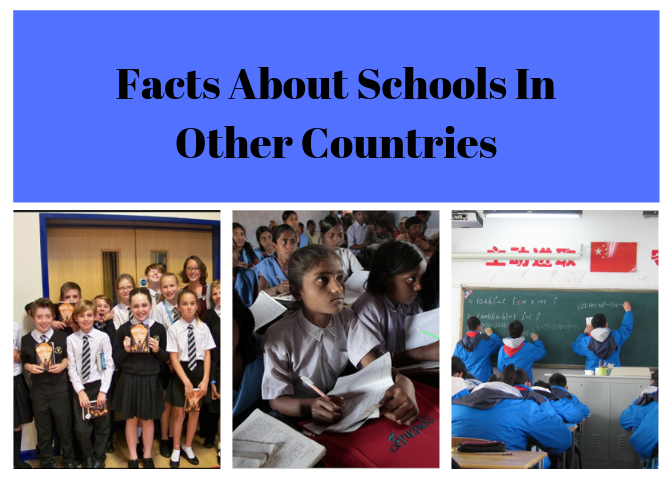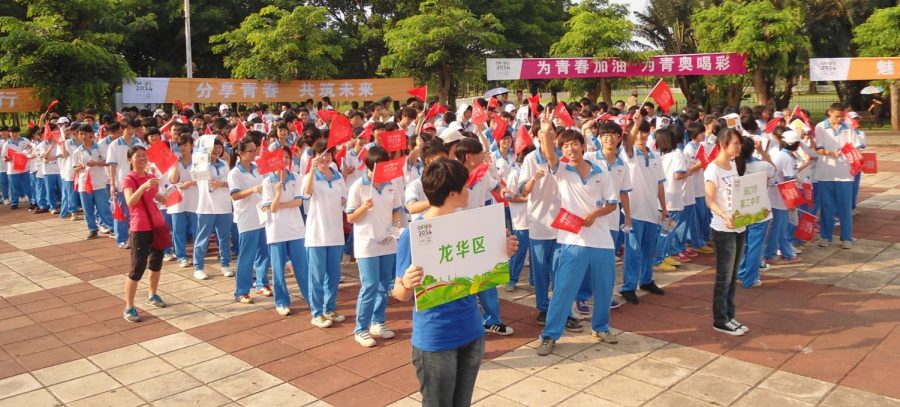Facts About Schools In Other Countries
Every day (except weekends and holidays) we go to school. From first period to eighth period with lunch and advisory in the middle. After middle school, high school will be waiting. But have you ever wondered how different schools in other countries are compared to our school? Here are some facts about schools/education in other countries;
1. Schools in China
Adult literacy rate in China is 96 percent, while youth literacy(between age 15 to 24) rate in China is 96.4 percent.
Children in China typically start pre-school when they’re only 3 years old. And after 3 more years of pre-school, they usually begin elementary school when they’re 6 years old. Education is very important in China. So Chinese parents usually do everything they can do to help their children obtain a good education.
Learning is done most by memorization. But in these days, discussion and computer-aided teaching are becoming common too. Because there isn’t an advisory class like us, most of the homework is done at home. Roughly two hours for primary school students, four hours for middle school students, and four to five hours for high school students.
Other facts:
- Students aren’t allowed to use calculators in class; so basically you have to solve equations almost all by hand.
- Students must take exams to get accepted into a middle school, high school, and college.
2. Schools in the United Kingdom
Adult literacy rate in the UK is 99 percent. Similar to Chinese people, British people also consider education very important. Because of that, a large portion of British tax revenues goes towards educational uses.
Most children attend two different types of schools; a primary school(age 4 or 5 to 12), and a secondary school(starting at age 12). Many children attend an infant’ school(age 4 to 7) and then a junior school(age 7 to 11 or 12) as an alternative. And after that, students are to take an exam to earn the General Certificate of Secondary Education.
Other facts:
- Most schools require uniforms; they’re often navy or gray.
- Most instructions are given in English, but some schools also offer it in Welsh, Gaelic, and Irish.
3. Schools in India
Adult literacy rate in India is 70 percent.
Education is a primary concern in India. Social divisions split literacy rates and access to education along; the level goes higher in urban areas than rural, man than woman, and rich than poor. Ninety percent of children enrolled in primary school, the rate drops dramatically in secondary school; many students drop out or fails in secondary school. Because of high poverty, children are forced to drop out of school to work early. Lack of school supplies in rural areas also forces the literacy rate down.
Other facts:
- Most parents want their children to specialize in science, mathematics, or business in secondary school.
- Cheating on exams is common.
4. Schools in Mexico
Adult literacy in Mexico is 95 percent.
In Mexico, education is compulsory for 12 years. Six years of primary education, three years of secondary education. After that, students are to enter one of the two tracks; a technical education program, or a pre-university education.
In school, there are many problems which students face. Buildings used as a school often lack drinkable water and electricity. The textbooks used are usually low-quality. And many schools have limited technology.
But even in these conditions, students are expected to have relationships with teachers; not only teachers but staffs, school employees, etc. And that comes from Mexican cultural traditions. Which makes the environment pleasant and socialized.
Other facts:
- Cheating is common, but it usually goes unpunished.
There are lots of different types and systems of schools across the globe. But even though there’s a difference between, the important thing is how the school helps students to learn.

Yoonjoo is a 7th grade student who loves reading, drawing, and music. She is learning to be more comfortable with computers by working her best as a reporter...





















